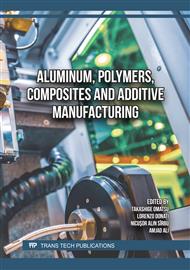p.35
p.51
p.63
p.71
p.77
p.89
p.95
p.103
p.109
Effect of Limonene on the Tensile Properties and Chemical Changes of Natural Rubber Products
Abstract:
The durability and functionality of medical rubber products made from natural rubber or poly (cis-1,4-isoprene) are essential in medical and healthcare applications. However, natural rubber products are prone to degradation over time, which can compromise their performance. This study investigates the impact of limonene on the degradation of natural rubber, focusing on the material’s physical and chemical properties. To achieve this, natural rubber samples were prepared and exposed to different concentrations of limonene oil (20%, 40% 60%). The effect of limonene on the natural rubber was assessed by measuring the changes in tensile strength, physical size of samples, stability and chemical composition over immersion times of 30, 60 and 90 minutes. The findings of this study revealed that the immersion of natural rubber in d-limonene led to a significant reduction of tensile properties due to chain scission and bond breaking as well as cross-linking within the rubber. These mechanical alterations were more distinct with the longer immersion times and the higher limoneone concentrations. Additionally, the samples exhibited noticeable dimensional changes with greater concentrations of d-limonene leading to more substantial swelling and ultimately causing a reduction in tensile strength. FTIR-ATR spectroscopy analysis had also revealed chemical modifications in the rubber's structure, particularly related to carbonyl groups. This study provides valuable insights into the vulnerability of natural rubber to limonene-induced degradation. It highlights the need for further research and formulation to enhance medical-grade rubber products' performance for SDG-3.
Info:
Periodical:
Pages:
109-114
Citation:
Online since:
October 2024
Authors:
Price:
Сopyright:
© 2024 Trans Tech Publications Ltd. All Rights Reserved
Share:
Citation:



